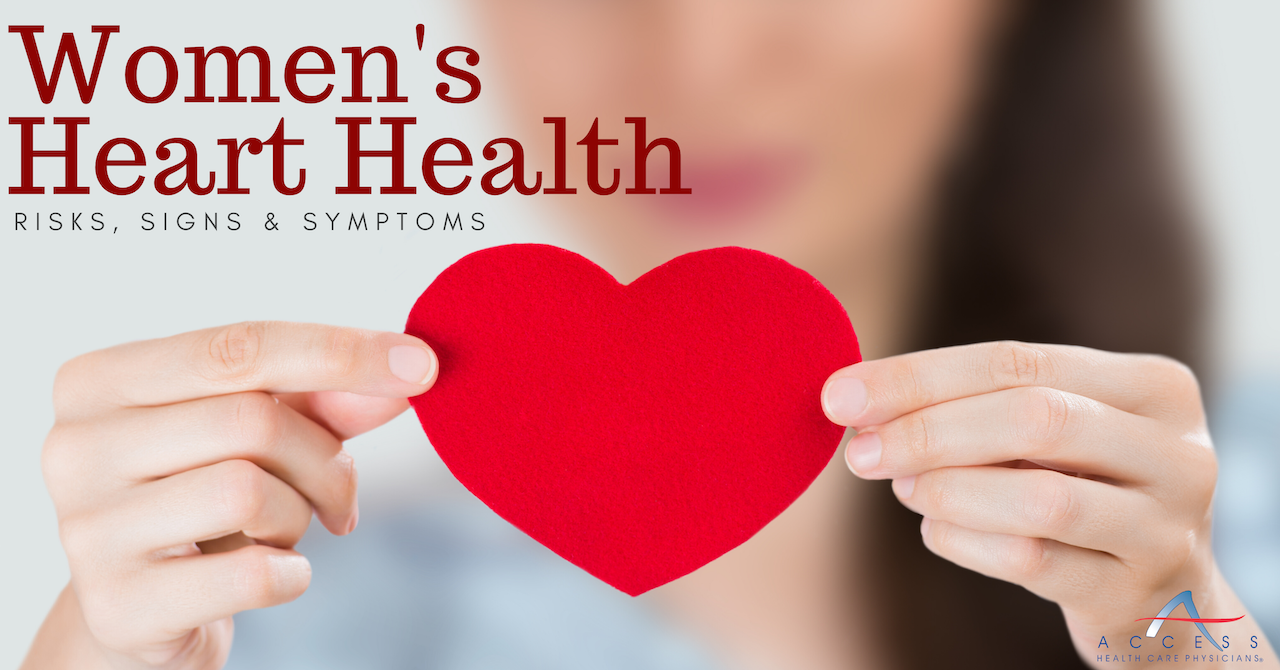On the first Friday each February, we participate in National Go Red for Women Day, a national movement from the American Heart Association intended to help end heart disease and stroke in women. Wearing red is way to raise awareness on women’s heart health. As we focus on women’s heart health, let's discuss a few risk factors that increase women’s chance of a heart attack.
According to the CDC (Center for Disease Control & Prevention) someone in the United States experiences a heart attack every 40 seconds. This translates to approximately 790,000 people each year. What’s more, according to the American Heart Association, nearly 80% of cardiac events can be prevented.
While heart attacks are more common in men than women overall, research now shows that certain risk factors may affect women more. Come along as we break down some of these risk factors.
- Smoking–It may not come as a surprise that research shows that both men and women are at an increased risk of heart attack if they are smokers. However, the more startling conclusion is that women who smoke are have more than a three times increased risk of heart attack than women who do not smoke. This is considered “excess risk” by researchers.
- High Blood Pressure– Constant strain on blood vessels and the heart by high blood pressure can cause long term damage and strain to your heart. In fact, in women, high blood pressure was tied to an over 80% increase in risk of heart attack.
- Diabetes– Both Type 1 and Type 2 diabetes increase a woman’s chance of a heart attack. Research has shown that women with Type 1 diabetes had almost 3 times the risk of a heart attack as men and in Type 2 diabetes, the risk was 47% higher.
Remember that simple steps such as a healthy diet, regular exercise, not smoking, limiting alcohol and maintaining a steady sleep schedule are good for your overall health as well as your heart health.
Know The Signs!
Did you know that signs of a heart attack in a woman can be different than for a man? Often, women can attribute these symptoms to other causes such as heartburn, ulcers, indigestion or anxiety and many do not seek treatment in time. Like men, the most common symptom is chest pain or discomfort, however, women are more likely than men to experience some of the following symptoms:
- Nausea or vomiting
- Shortness of breath – with or without chest discomfort
- Pain in one or both arms, upper back, neck, jaw or stomach
- Fainting
- Cold Sweat
- Dizziness or lightheadness
- Discomfort, pressure or “fullness” in the center of the chest (May go away and return or last more than a few minutes)
- Pale or clammy skin
- Inability to sleep
- Unusual fatigue
While women may also experience the “typical” symptoms, every woman should know these additional symptoms and listen to their bodies. Be sure to speak to your doctor about your risk for heart disease and take steps to protect your heart.
For more informative content, be sure to follow and “Like” us on Facebook, Instagram and check our blog page often!
Written by S. Campbell for Access Health Care Physicians, LLC


